
A twist on the candle mystery
Three candles of different heights are lit in a closed space. Surprisingly, the longest candle goes out first. Can you solve the mystery?

Each December, Physics in Advent (PiA) opens the door to 24 fun and thought-provoking physics experiments, with the chance to win cool prizes!

Under the motto “still 24 experiments until Christmas”, Physics in Advent (PiA) offers simple experiments in the form of YouTube videos to students aged 11 to 18 every day from 1 to 24 December. Starting 1 November, students can register on the PiA webpage and in December they open a little door every day to find a physics experiment presented by Ms or Mr Santa. The students do the experiments using household materials, watch the phenomenon, enter their answers to our multiple-choice questions on the PiA website, and the next day they see the corresponding solution video with an explanation. At Christmas, students who have collected up to 24 points receive individual certificates which they can hand in at school and win prizes. All videos are offered in German and English, with French, Italian, Ukrainian, Lithuanian, and Slovenian subtitles. Registration and participation are free of charge.
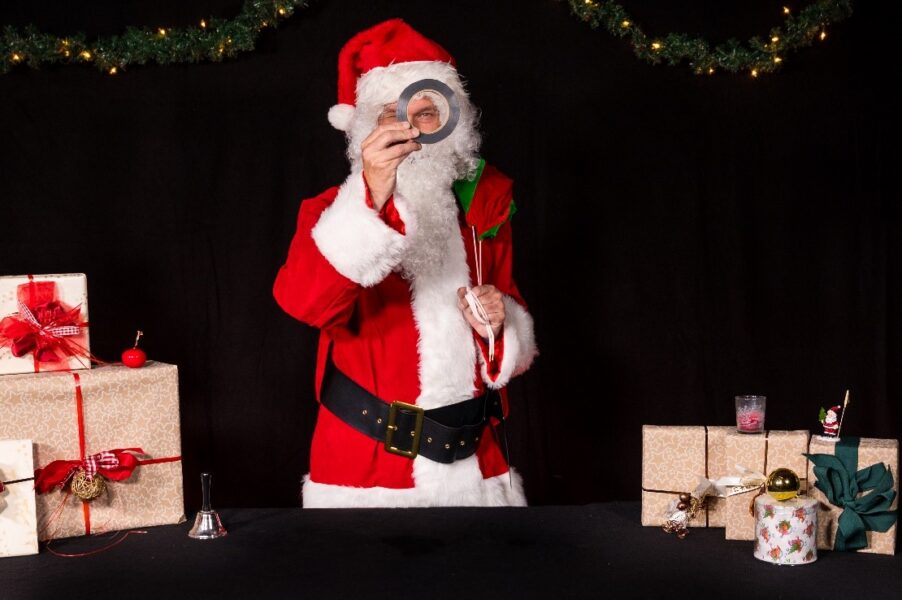
The aim of Physics in Advent (PiA) is to motivate and inspire high-school students to try out experiments and comprehend the physical phenomena of nature themselves in a hands-on way, without the need for complicated theoretical calculations. We demonstrate physics effects as well as their technological applications, and students are taught that physics and experimentation – alone or in a group – are fun. The project has won several prizes, for example, 2nd place in the 2015 Innovation Award in our region. In 2023, approximately 70 000 participants from over 72 countries registered, including more than 63 800 students (52% women), and during Advent we counted around 2.5 million visitors. The promotion of physics and young scientists is one of the main goals.

The experiments are presented by Ms or Mr Santa with a story-telling approach. They can easily be done by everyone and are based on low-cost household materials, such as glasses, water, salt, sugar, scissors, candles, balloons, matches, paper, needles, forks, spoons, or books. Every year we aim to include one or two experiments that use smartphone sensors to take physics measurements. This way pupils can make full use of their powerful smartphones, but those without do not miss much. Sometimes the observed outcome is what participants expect, and sometimes something very surprising happens! The outcomes of some experiments were guessed wrongly by several university physics professors, so to win maximum points pupils learn quickly that they need to do the experiments and accept nature’s answer, rather than guessing based on their biased expectations!
The experiments cover curriculum topics like mechanics, optics, thermodynamics, electricity, and magnetism, and sometimes even touch upon quantum mechanics. Experiments can be proposed by everyone and get selected by a program committee composed of six teachers, experts in physics teaching methodology, or experimental physics professors. Most experiments can be done in five minutes, while some take a bit more preparation time and are usually offered over the weekend. Some of the experiments are more technically demanding and are particularly suitable for older students or younger students with some help, whereas the easier experiments are suitable for younger students to try alone.
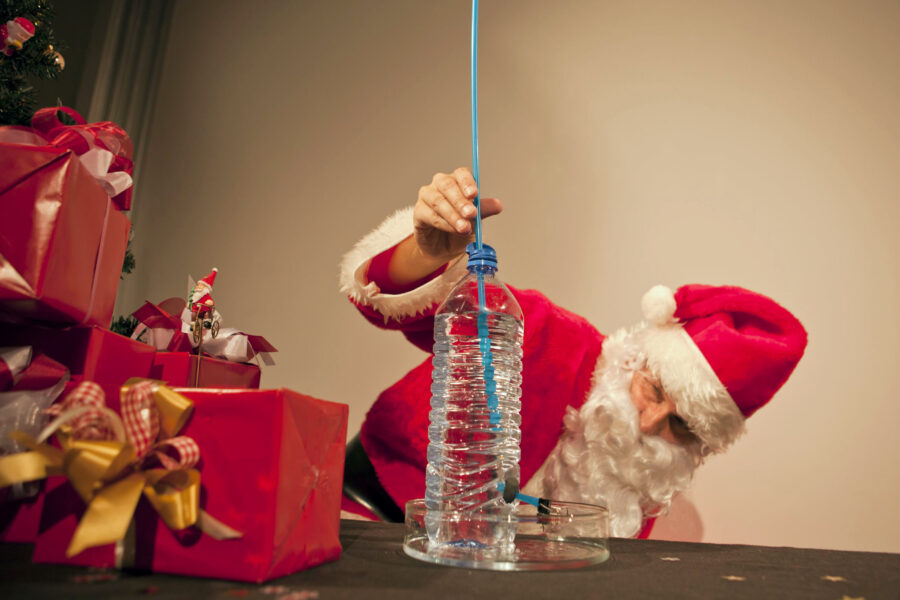
Given that this is a fully international project, time zones are taken into account so that everyone has the same chances. Each day a new door opens at 5:00 AM local time. Students can watch the movie and do the experiment any time of the day and may repeat the experiment under slightly modified conditions. They can also discuss with friends and family and compare their results. Answers must be submitted via multiple choice until 11 pm local time. The next morning at 8:00 AM CET, they can see the solution and get their point, or not. Weekend questions can be answered until 11 pm on Monday evening. If an answer is not submitted or might not be correct, one of the jokers automatically jumps in. Students start with two jokers and can earn an additional joker by watching ten solution videos. In addition, they can use one audience joker, which shows what percentage of the other participants chose which answer, or one 50:50 joker, which cancels two of the four multiple choice options.

During the week, the students can do, show, and discuss their experiments at school, either as part of their lessons or during a break, maybe even as an initiative across all levels and grades. Weekend questions can be discussed and presented on the subsequent Monday or via a chat room. Teachers can guide the students, give them space to do and present the experiments individually, or work out a scheme to share and compare class results. Teachers can see how many students in their class are active, but they cannot see the answers or points of individual students, to maintain data privacy and reduce pressure. If experiments are assigned as homework, we recommend a discussion with the parents first, as some parents might feel obliged to help and can feel overwhelmed. The experiments are well suited for a competition between individual students within a class, between classes within a school, or between entire schools.
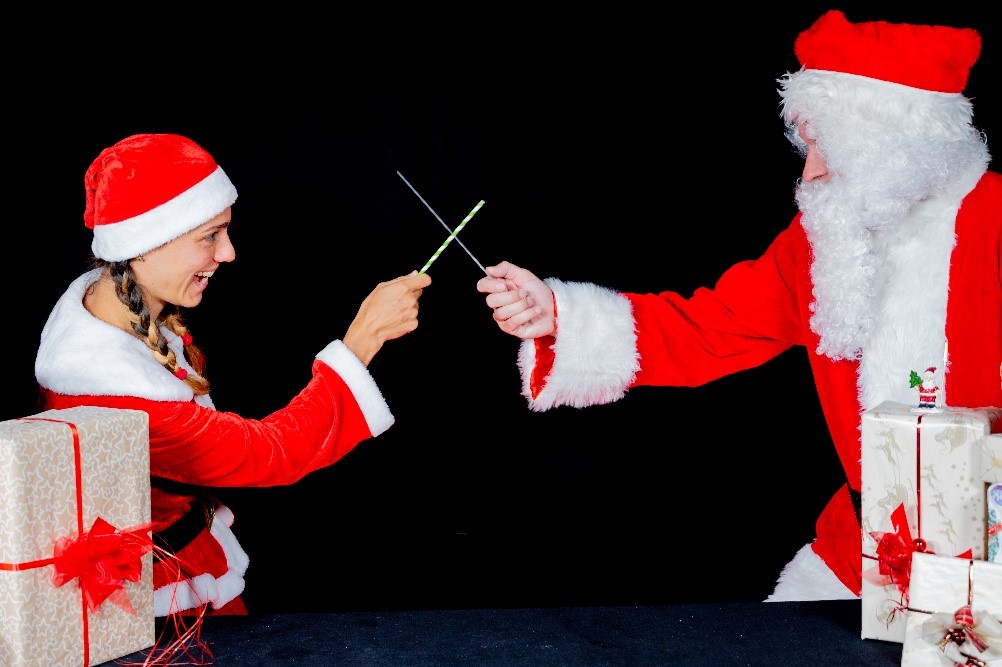
Finally, experiments from the last 12 years remain online on the PiA archive page and YouTube channel and can be used to support teaching throughout the year.
All participants receive an individual certificate with their name and score. In some schools, the certificates can be recognized for further STEM achievements or certificates or mentioned on the regular school certificate at the end of the year.
We draw randomly from the top participants in terms of number of points or participating fraction of students in a school class or school, and award prizes such as a trip to London to visit the Harry Potter film studies, a jump in a vertical wind tunnel, a flight in a glider plane, iPads, books, experiment sets, science kits, a physics show by the “Physikanten”, and more. In recent years, we have awarded up to 1 700 prizes per year.
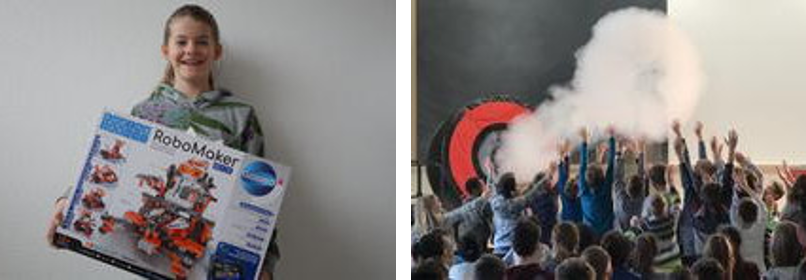
Prizes for school classes include visits to science museums, research institutes, and industrial companies. Experience shows that such extracurricular places of learning leave a lasting and inspiring impression on students and prompt personal contacts between teachers, students, and the companies, which can often be the beginning of affiliations for internships, professional education, or the choice of university studies. We know that companies are looking for the skilled workers of tomorrow; let us help with the match-making.
Registration starts on 1 November in the PiA webpage and is open until 24 of December. Even late comers can win prizes, for example, the special weekend awards for correct questions on Saturday and Sunday. Participants can register as individuals (student, teacher, or adult) or jointly as a school class. For the latter, the school needs to be registered and a teacher needs to register at least one school class. Students then register individually and add the class code to their account. This way, the students can participate individually and in the class competition.
We hope you and your students will join us in December to do physics experiments together and to have fun!

PiA – Physics in Advent is supported by the physics societies of Germany (DPG), Austria (ÖPG), Switzerland (SPS), the Netherlands (NNV), Lithuania (TUM), and Europe (EPS), as well as numerous other STEM initiatives and institutions, such as Science on Stage. Prizes are provided as cash or in-kind contributions by numerous companies and institutions.

Three candles of different heights are lit in a closed space. Surprisingly, the longest candle goes out first. Can you solve the mystery?
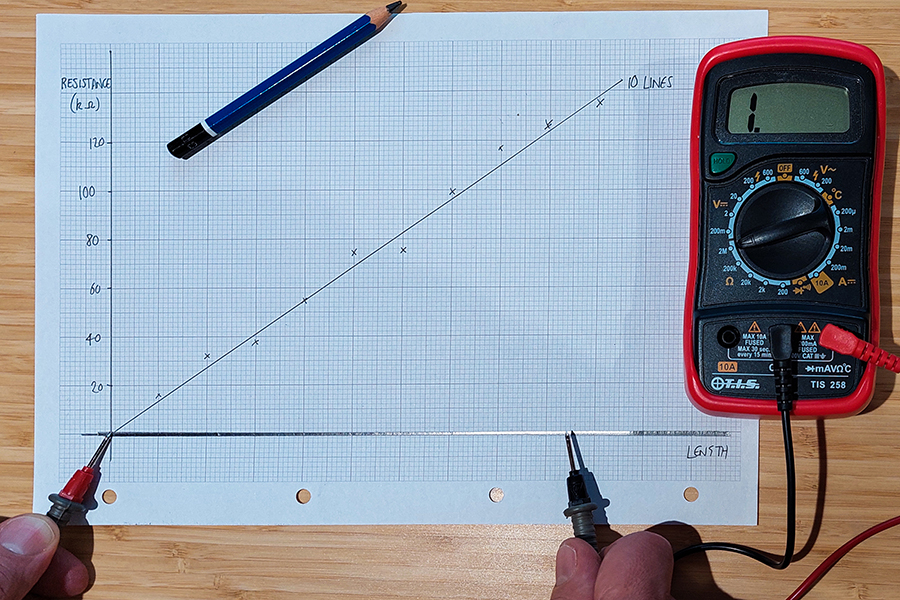
Sweet success: everyday objects can be used to demonstrate fundamental physical principles in an engaging…

Through the looking glass: unlock the secrets of anamorphosis, where art and science meet to create mind-bending illusions!